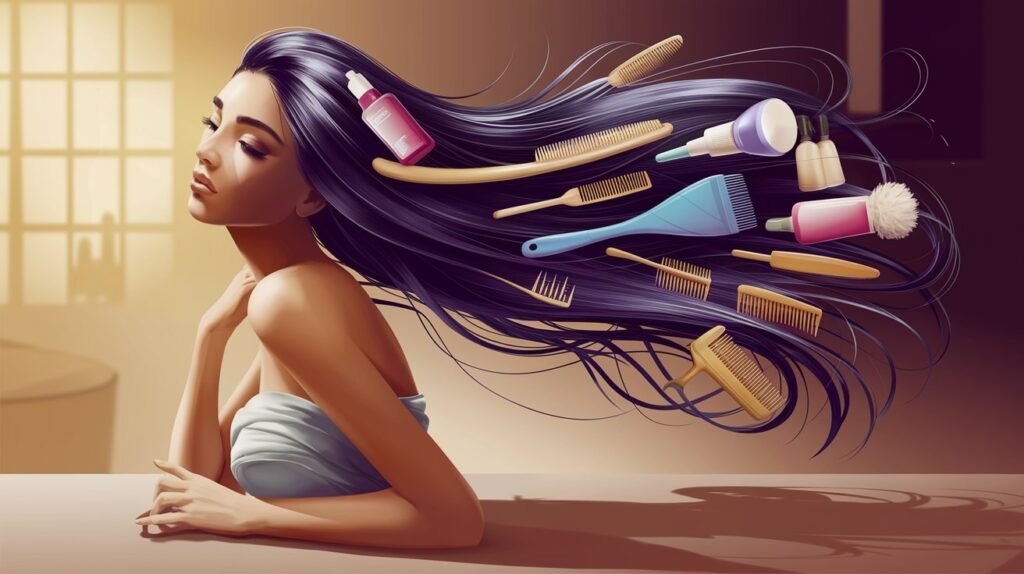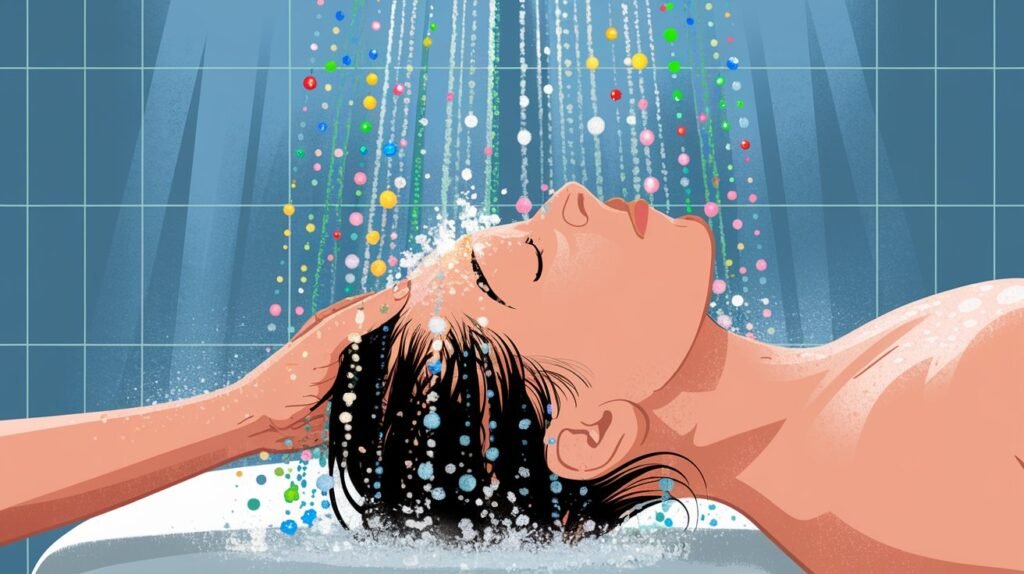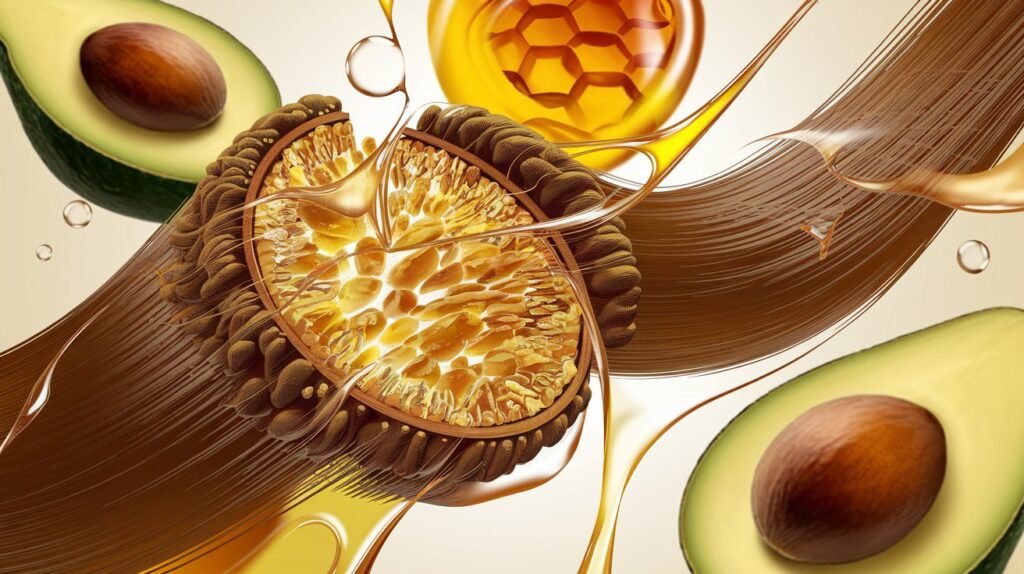
More than a feature, hair is an expression of identity and personality; it dictates your style as well as confidence. Your hair may be curly, straight, wavy or coiled but believing that taking care of it differently could possibly change the way they look except for changing their health altogether. There are multiple things you can do to get that perfect hair growth — from selecting the correct products, formulating your routine and what not for making sure your strands are at its optimum. Here, we discuss some being haircare tips that address each type of hair and talk about how you can take your locks looking healthy, colorful and beautiful.
1. Understanding Your Hair Type
Before adopting a regiment for taking care of your hair, it is essential that you know the type of hairs on your scalp because this is what forms the basis. There are 4 basic types of hair: straight, wavy, curly and coily. The precise character of each corresponds to the form in which you need to care for them.
Straight Hair:
Smooth in texture (thus the shininess), straight hair is known to reflect more light than curly or wavy hair. But straight hair tends to become oily quickly, as the natural oils from your scalp make their way down the hair shaft faster than other types of locks. The shampoo and conditioner need to be skipped for a more greasy esthetic.
Pro Tip: Remember to choose lightweight, oil-free products, Don’t forget to try out dry shampoo between washes to soak up excess oil and refresh your hair! any excess grease.
Wavy Hair:
Wavy hair falls between straight and curly but takes a nice loose wave, sometimes even becoming slightly wacky like Madonna from the 1980s. Loose curls (Type 2) Generally, type-2 hair is naturally loose and straight at the root leading into a more voluminous wave-like pattern further down. It maintains the perfect balance of hydration without adding weight to my waves. Try: sulfate-free, moisture-boosting shampoo and conditioners that work best with the natural texture of your hair.
Curly Hair:
Curly hair is a set of perfect spiral-shaped curls, this needs more hydration to stay fresh and voluminous as well. Because it is harder for those oils to travel down the shaft of each curl, this hair type tends to have a dull and parched look.
Follow-up: Use options that are rich and nourishing, avoid using products with sulfates or alcohol berries to keep the moisture in your strands. Use the curly girl method (focus on moisture and low manipulation)
Coily Hair:
Coily hair, kinky or afro- textured are tight curl patterns that needs the most moisture. This is a type of hair that can easily shrink and wear down because each strand consists of kinks and curls.
Tip: Use deep conditioning treatments and wear protective styles that keep your hair moisturized with less breakage
2. How to Build a Hair Routine

The backbone of having good hair health is a consistent routine that suits you & your lifestyle based on signs and signals from your hair. Creating a hair care regimen that helps you look your best every day
Shampooing and Conditioning
Most of us are too tempted to wash our hair every day — but we should resist, because the more often you clean your scalp with a foaming cleanser for example it also means removing its natural protective oils. Experts advice washing your hair 2–3 times a week, according to the needs of individuals. After shampooing, remember to follow up with a proper conditioner that will replenish lost moisture and fortify your hair.
Tip: Just apply shampoo to the scalp and roots allow it flow down by itself in your other hair parts. Only condition mid-lengths through ends to avoid weighing the roots down.
Hair Masks and Intense Conditioning
Use a Hair Mask/Deep Conditioner: We all need that little extra love and pampering, right? These treatments are focused on addressing dryness and curlier, coiler hair types
Pro tip: Just wait with the mask for around 15 minutes, it will help to go into hair properly.
Heat Styling and Protection
Blow dryers, Smoothing irons and curling wands are heat styling tools that can really do a number to your hair if used inappropriately. Before you style, ALWAYS apply a heat protectant that will shield your strands from high temps so they stay damage free.
Tip: Use the lowest heat setting necessary and Limit heat styling your hair to once or twice a week.
Trimming and Maintenance
Regular trims are a must to maintain health of your hair and avoid split ends. Getting a trim every 6-8 weeks can encourage your hair to grow longer and stronger by cutting out those damaged portions.
Pro Tip: Get those trims in, even if you are growing your hair out. Using healthy ends simply makes your hair look good.
3.Choosing the Right Products
There are so many haircare products in the market that finding suitable ones become a task. I followed up to see what experts had suggested people be on the lookout for.
Sulfate-Free Shampoos
Sulfates, such as those found to be cleaning agents in most shampoos, can cause your hair or scalps nutrients to disappear over time. The sulfate free formula is kinder on your hair and helps keep the moisture locked in, especially for color-treated as well as curly haired ladies.
Pro Tip: If after washing your hair feels dry or frizzy, try out SLS-free shampoo.
The Role of Oils in Haircare
Use of oils: Oils are one such way, which can hold your hair moisture till the next time you wash. Common selections include: argan oil, coconut oil and jojoba oils. They can be used as a leave in treatment or to combat frizz and add shine.
Hair tip: Don’t over do it with oils and hampers; they can make fine hair feel or look a little greasy. Pay attention to put them on the hair edges.
4. Leave in-conditioners and detanglers
This will keep your hair moisture all the time for a long-lasting and easy to detangle, especially in curly/coily characters. This is why detanglers are made that basically do the job of preparing your hair after a wash so it become easy to pass comb through them without breaking.
Zara recommends, Use a wide tooth comb to detangle from the ends upwards (the less breakage in your hair the better).
5. Most Common Hair Problems and Remedies For Them

Many people experience some hair problems, yet most of them have solutions. Here’s how to tackle them:
Split Ends:
When the hair shaft is damaged and frays, split ends develop. If your ends are splitting, all that can be done is the cut those split-ends off as they cannot mend themselves.
Tip: avoid split ends with wide tooth comb on damp hair and limit using heat styling.
Frizz and Humidity Control:
Frizz is usually your hair telling you that it needs moisture and the cuticle of the hair strand has become dam aged. For Maximum Frizz Reduction embrace moisture and the look of your natural curl be extra diligent about hydrating products, avoid heat as much as you can even styling with just a hair dryer may be too damaging for smoothest results and if possible let it air dry.
Tip: Use anti-humidity sprays, and serums to trap in moisture and prevent frizz in humid weather. Hair Thinning and Breakage. Hair thinning is the result of stress, poor diet, or over-styling. Breakage is the result of weakened hair, which often occurs when excessive heat is applied, when in contact with chemicals, or when hair lacks sufficient moisture.
Tip: Use protein masks and other strengthening treatments, and reduce use of harsh chemicals, excessive heating.
Hair care depending on the climate:
Climate also impacts hair strongly whether you live in a hot, humid climate or cold, dry. Hot and Humid Weather. Humidity causes hair to be frizzy and hard to manage. To prevent this, use a light anti-frizz serum or leave-in conditioner that forms a shield against excessive moisture from the air.
Tip: style your hair in combinations that work with its natural texture but do not reserve heat. Dry and Cold Environments. Cold, dry air zaps moisture and makes it more fragile and dry. Use nourishing, moisturizing oils, creams, and deep conditioners.
Tip: prevent your hair from winter wind with beanies, too frequent washing, nourishing foods and water.
Nutrition and hair health:
What you eat is also important to the health of your hair. Balanced diet, vitamins, and minerals will help it develop and shine. Vitamins and minerals. Some vitamins such as vitamin B7 and B, D, and E influence hair thickness, growth, and length. Minerals such as zinc and iron also play critical functions in hair health.
Although we can add certain foods in our diet like green leafy veggies, eggs fish nuts and seeds for experienced hair growth.
Hydration for Hair Strength:
Keeping your locks strong and supple means staying hydrated. Dehydration makes your hair weak and easy to break.
Pro Tip: Hydrate, hydrate — drink plenty of water throughout the whole day to keep that hair hydrated from inside out!
6. Bioprogram, natural vs. chemical treatments
Natural and chemical treatments have their own groups of supporters who argue which is better for your hair. Pros & Cons of BothLIKELY Impact
Going Natural: The Good and Bad
Since oils, butters and herbal rinses are free from harsh chemicals they are essentially some of the mildest hair treatments available. While this is true, they may not provide the results some people are looking for — at least dramatic in straightening or coloring.
Pro-Tip: But if you want to grown it out SANS chemicals? just use natural product on your hair that are beneficial overtime for the healthy mane.
Using Chemicals Treatments Safely
If you find yourself on a lost hair journey, it could be because chemical reactions between perms, relaxers and dyes are what keep responding well to (if over-treated, of course). Chemically, always go professional and treat with lots of deep conditioners.
Tip: allow your hair to rest between treatments; space out chemical exposure and use products made specifically for chemically treated hair.
Conclusion
Taking care of your hair — it doesn’t have to be so puzzling and annoying. Long gone are the days when you had to settle for hair just as it is – these products and styles can pull out healthy, beautiful locks from even the most unruly of heads. To navigate determining your individual hair demands, WTK has partnered with vivacious experts to first and foremost ensure you know how to craft a proper routine of professional care that will help keep every strand in good condition. Consistency is everything in hair care, even the little changes can make a big difference.
For more info you can read this article Gisou.com


